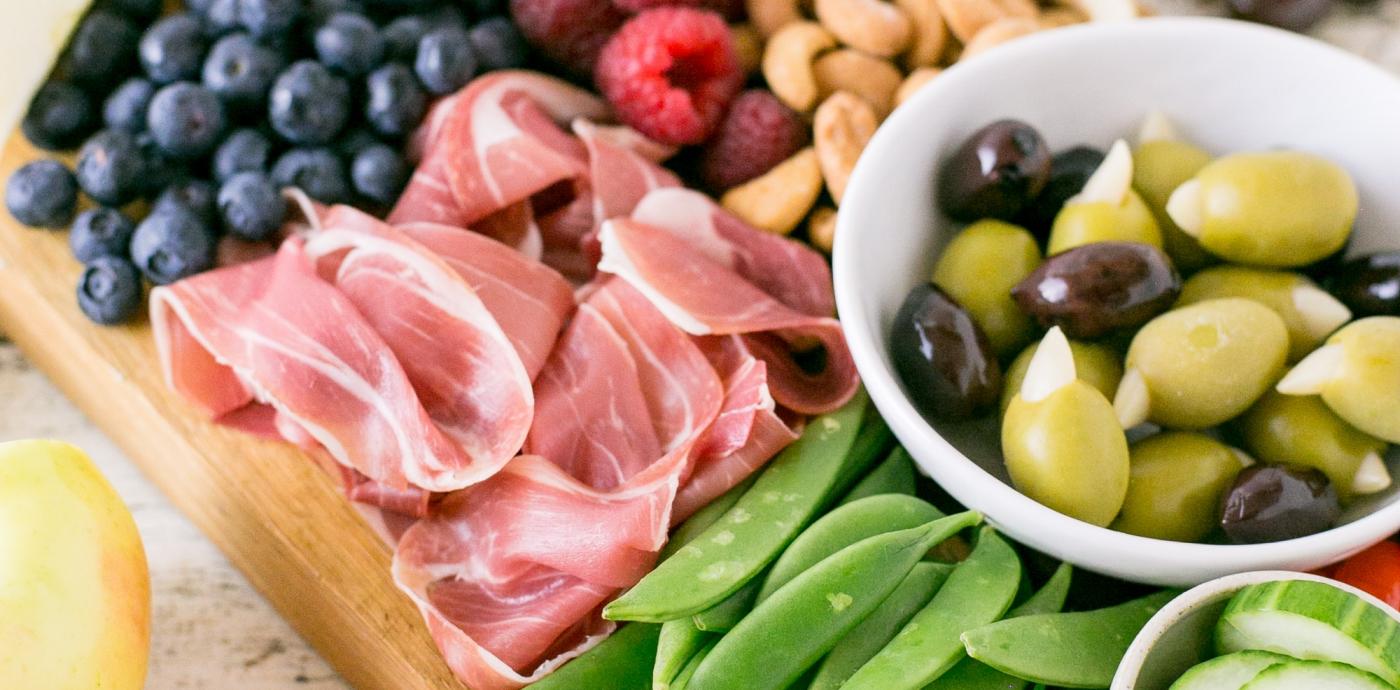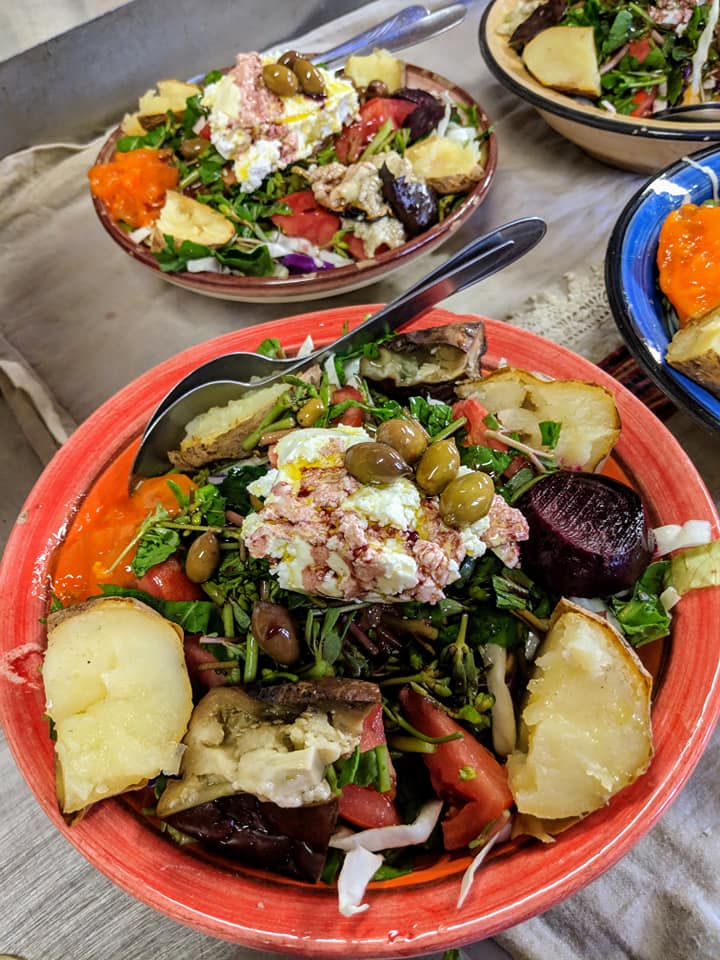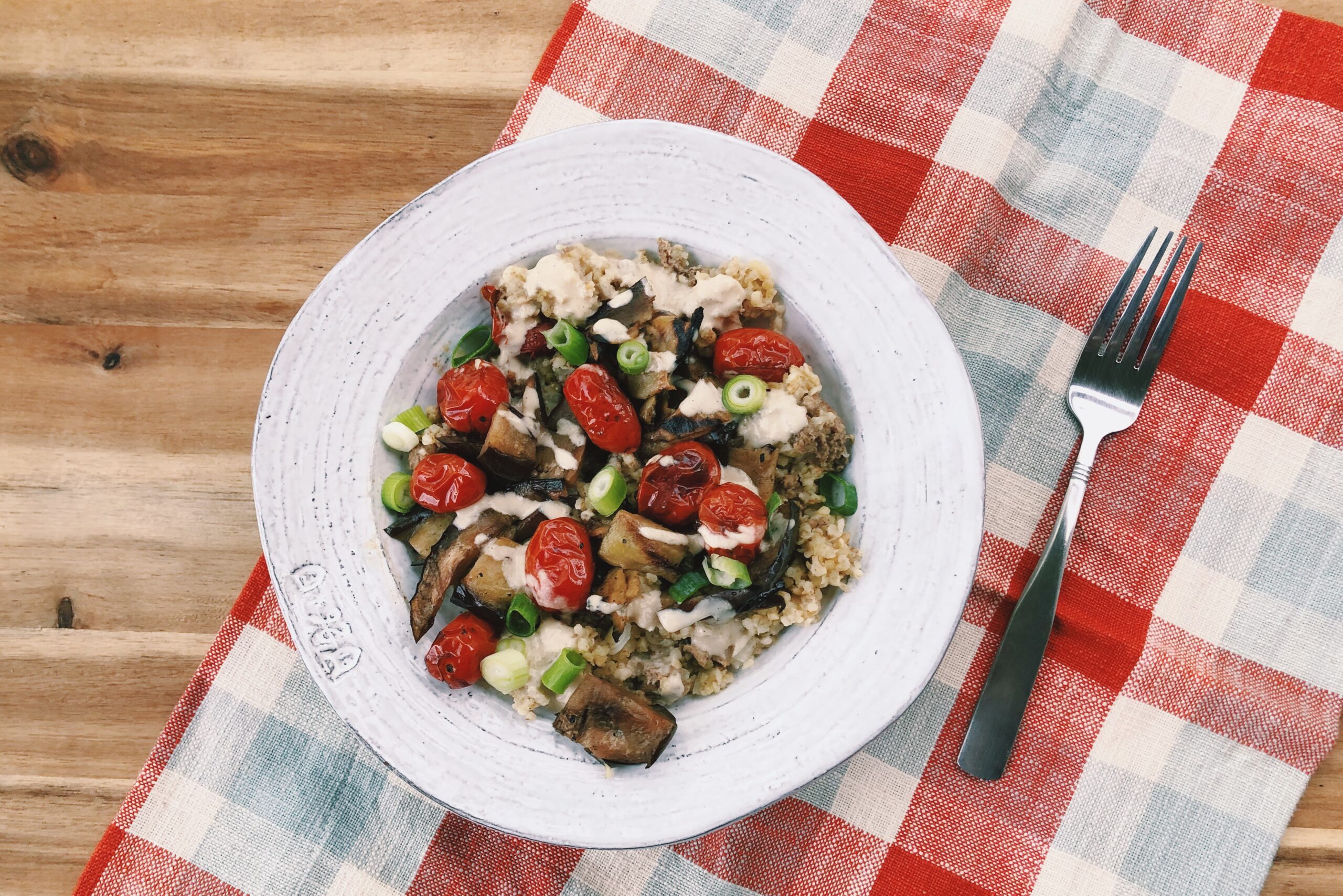Historically, people in the Mediterranean ate only what their land produced-namely, lots of fruit and vegetables, especially wild greens, whole grains, and pulses. Because animals were expensive and required a lot of land to graze, meat consumption in a traditional Mediterranean Diet was mostly limited to holidays, religious rituals and special occasions.
Today, we are learning that this mostly plant-based Mediterranean Diet, where meat is used as more of a garnish, has numerous health and environmental benets. In fact, the ground-breaking EAT-Lancet report recommends limiting meat and poultry intake to less than 1 ½ ounces per day in order to optimize both planetary and human health.
When those in the Mediterranean did consume meat, it typically consisted of smaller, pasture-raised animals such as chickens, rabbits, lambs, and goats. On the island of Crete, which is considered the heart of the Mediterranean Diet and lifestyle, you’ll still find livestock, for instance, goats and sheep, roaming the countryside and mountain tops, munching on a natural diet of herbs and berries. Animals raised this way, that is, pasture-grazed/grass-fed, tend to be leaner (i.e., less total fat) and healthier (e.g., higher in omega-3 fats) because they are consuming a natural diet of herbs and wild plants.
Regardless of the meat selection available at your grocery store or farmers market, anyone can take a Mediterranean approach to meat consumption by adopting a “less is more” attitude. For example, swapping out a large steak and potato meal for steak and vegetable kebabs over a bulgur walnut pilaf. Whether you garnish a salad with a few thinly sliced strips of prosciutto, stuff vegetables with lentils and small amounts of ground lamb, or stir a handful of leftover chicken into a pasta dish or soup, it only takes a little bit of meat to have a big impact on flavor.
Our Mediterranean neighbors have also been much better at embracing nose-to-tail cooking. There’s nothing new or novel about nose-to-tail, but rather a return to a more traditional way of eating that pays respect to the whole animal-muscle, bones, cartilage, and organ meats. Embracing noise-to-tail cooking can be economical, good for the environment (i.e., less food waste) and have health benefits. For example, slow-simmered broths-made from bones-are full of nourishing minerals, and can be a great way to make use of a much underutilized ingredient. This philosophy of cooking can also be economical; you pay less for a whole chicken than if you were to buy all the pieces separately.
You need not become a vegetarian or vegan, though you might consider modest changes that reduce meat consumption. For instance, instead of meat as the main dish, try using smaller quantities of meat to enhance the flavor of a meal. For example, adding a bit of crispy pancetta or a ham hock to a big pot of beans is an inexpensive way to add meaty, umami flavor and texture. Same goes for pasta, soups, stews, pizza, flatbreads, grain bowls, etc.
Though obvious, the easiest way to limit your meat intake is to simply eat less meat. Consider eating a vegetarian dinner once or twice a week or eliminating meat at breakfast and lunch and enjoying a small portion at dinner. Figure out what works for you and perhaps you may decide that eating less meat is not as challenging as you thought it would be. You may even find yourself craving more vegetables.
Want biweekly Med Diet information and recipes in your Inbox? Sign up for our Fresh Fridays newsletter by clicking the Subscribe button at the bottom of this page!
Join the Make Every Day Mediterranean Club Facebook group for additional information and support.








